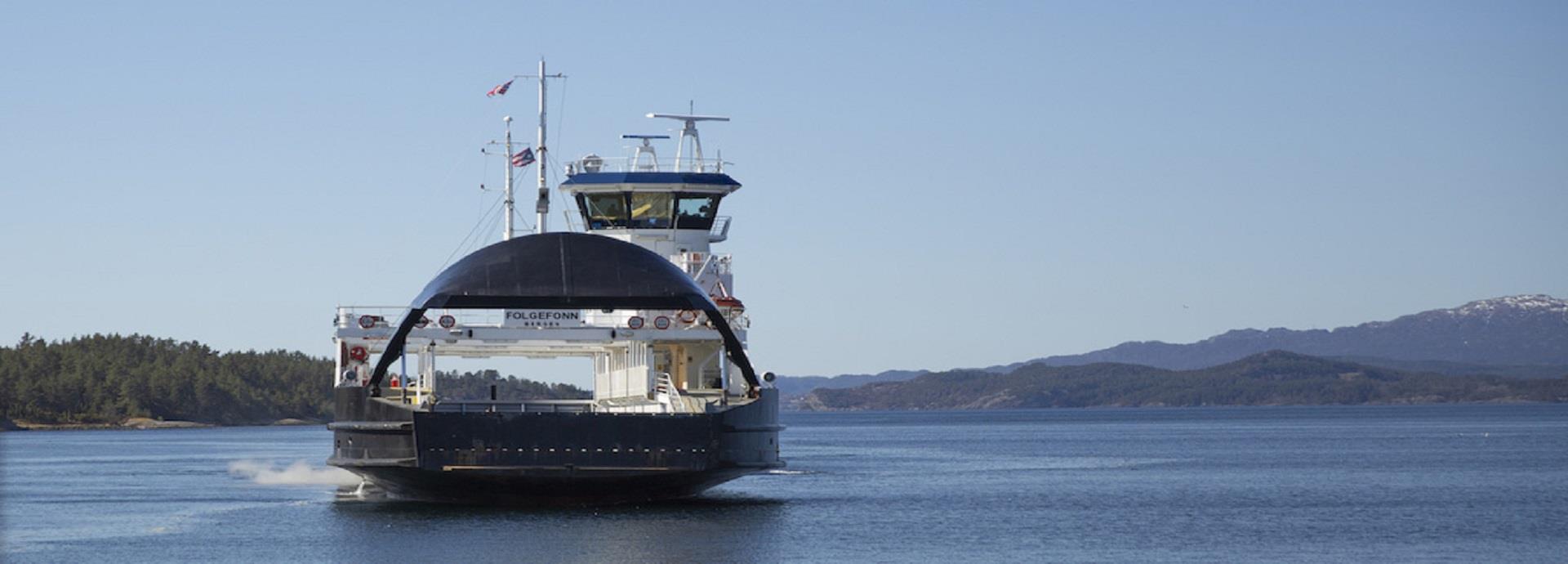

The seas of Southern Norway witnessed a new phenomenon in April 2018 when Wärtsilä Marine Solutions and its Dynamic Positioning Inc. (DP) subsidiary successfully tested auto-docking on the Norwegian ro-ro passenger ship Folgefonn in the Stord, Norway harbour.
The system was further tested, in November, for full dock-to-dock capability, with the autonomous operation being utilised, uninterrupted, for the entire route, visiting all three ports serviced by the ship.
The operation was started by simply selecting “Sail”, which authorised the autonomous controller to take control of the vessel. The ferry was able to leave the dock, manoeuvre out of the harbour, sail to the next port of call, manoeuvre through the harbour entrance, and dock alongside the terminal – all without human intervention. It is believed to be the first ever attempt at fully automated dock-to-dock operation, in complete hands-off mode, for a vessel of this size.
The idea of such autonomous ships would have been considered unthinkable just a decade ago. However, rapid advances in artificial intelligence technology has enabled ship owners and shipbuilders to build working examples of what would once have been considered the realm of science fiction. Controlled by sophisticated AI systems, the fleets of the future would dramatically improve efficiencies by reducing the impact of human error, optimising the best routes automatically, and even cut down on emissions by improving the efficiencies of various onboard systems.
With over 90% of world trade carried by sea, the marine industry is seized by the potential that AI can unlock in different aspects of their vast marine networks.
Unlocking the power of the machine
At the Das Deutsche Forschungszentrum für Künstliche Intelligenz (DFKI), the world’s largest research centre in the field of artificial intelligence, efforts are underway to use AI in combination with robotics in the field of deep-sea mining. The idea here is to use small robots to manoeuvre around the seabed and mine for metals like Manganese etc. AI will be used to both guide the robots, and also analyse the robot’s sensor signals allowing them to pinpoint manganese deposits with far greater precision than humans. This precision also helps mitigate the environmental impact of deep-sea mining.
“Humans tend to observe patterns in sensor signals and this also a strength of AI systems,” says Dr Peter Kampmann, Coordinator of the Underwater Robotics Research at DFKI. “This approach also allows the harvesting in uneven terrain. The idea is to avoid the generation of plume and disturbance of the seabed.”
AI’s ability to spot patterns is also being used by industries to analyse market trends and help businesses make informed decisions.
For instance, at their Acceleration Centre in Helsinki, Wärtsilä is working on ‘Project Horizon’, a programme to create an AI-model that will help predict the profile of potential investors in marine vessels a full 6 to 12 months before its contract is published.
The obvious aim is to provide marketing leads, giving the sales team a head start in their engagement with customers. “It is about leveraging historical data from the ‘Clarksons’ database, which is an authority in providing data within the marine industry,” says He Zhang, Senior Data Scientist at Wärtsilä.
To do this the company uses predictive indicators for each ship owner. It can range from the number of vessels owned and type of vessel to even global economic indicators like crude oil indices. These indicators are used to train the AI-model and help them automatically predict who might be planning to invest in vessels.
“If you contact 10% of all the ship owners, say 3,000 or 4,000 companies who have the potential to invest in new vessels, that is 300 to 400 of them - simply based your experience, you are likely to have 10% of the market,” explains Zhang. “But, if you use the machine-learning model that we have developed, this number can go up to 75%.”
Such advanced analysis is only possible through the use of AI, with the model taking only about 3 minutes to prepare a list of potential investors. While the new model is being piloted for a select group of users within Wärtsilä, the implications of this technology for the sales division of any company is enormous.
Deus ex machina
AI’s use in the marine industry is not just limited to big business. It can help play a huge role in disaster assistance, rescue and relief too.
In Australia, the SharkSpotter system uses a fleet of aerial drones with real-time imagery to scan the sea off popular beaches. The images are analysed by AI which then analyses all the objects in the sea, placing them in different categories like whales, sharks, swimmers, boats etc. When the system detects potential threats like sharks near human activity zones, it automatically alerts responders on the ground.
The use of unmanned aerial vehicles that can search for, or deliver supplies to victims in flooding disasters is one example, says Matthew Travers, Systems Scientist at the Robotics Institute of Carnegie Mellon University. However, he stresses that this is just “scratching the surface.”
“The hope is that future systems will not just extend the responders’ reach, but essentially multiply their capabilities to make their incredibly difficult jobs easier,” he explains.
All this is made possible thanks to the ability of AI to study massive amounts of raw data, infer patterns, and come up with various data models. With examples such as those listed above already in action, the case for AI augmenting the marine industry is clear to see.
